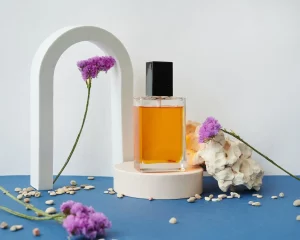How to Make Your Own Natural Perfume
How to Make Your Own Natural Perfume


Introduction
Commercial perfumes often contain synthetic chemicals that can be harsh on the skin and may trigger allergies. Making your own natural perfume allows you to control the ingredients, create a personalized fragrance, and enjoy a more eco-friendly alternative. In this comprehensive guide, we will walk you through the step-by-step process of crafting your natural perfume using essential oils and other natural ingredients. Get ready to embark on a journey of scents and creativity!
Understanding the Basics of Natural Perfumery
Before we dive into the crafting process, it’s essential to understand the fundamental principles of natural perfumery:
1. Base Notes
Base notes are the foundation of your perfume and have a long-lasting scent. They include oils like sandalwood, vanilla, and patchouli.
2. Middle Notes
Middle notes add complexity and balance to your perfume. Oils such as lavender, rose, and ylang-ylang are popular middle notes.
3. Top Notes
Top notes create the initial impression of your perfume and are the first scents you’ll notice. Common top notes are citrus oils like bergamot, lemon, and sweet orange.
4. Carrier Oil
Carrier oils dilute essential oils and help disperse the fragrance. Jojoba oil, sweet almond oil, and fractionated coconut oil are excellent choices.
5. Solvent
Alcohol or a high-proof vodka acts as a solvent to dissolve the essential oils and fix the perfume’s scent.
Step-by-Step Guide to Making Your Natural Perfume
1. Choose Your Essential Oils
Select a combination of base, middle, and top notes to create a balanced and pleasing fragrance. Experiment with different oils to find your perfect blend.
2. Create Your Perfume Formula
For a well-balanced perfume, follow the 30-50-20 rule: use 30% base notes, 50% middle notes, and 20% top notes. Adjust the ratios based on your preference.
3. Prepare the Perfume Bottle
Use a clean, dark glass perfume bottle to protect the essential oils from light and oxidation. Amber or cobalt glass bottles are excellent choices.
4. Measure and Combine
Using a dropper, carefully measure the desired amount of each essential oil and add them to the bottle. Ensure accurate measurements for consistent results.
5. Dilute with Carrier Oil
Fill the remainder of the bottle with your chosen carrier oil. Leave enough space for shaking the mixture to blend the oils thoroughly.
6. Fix the Scent with Alcohol
Add a small amount of alcohol or vodka to the bottle to fix and preserve the fragrance. The alcohol also helps the scent to evaporate gradually.
7. Shake and Age
Secure the bottle cap and gently shake the mixture to blend the oils. Store the perfume in a cool, dark place for at least two weeks to allow the scents to mature.
8. Test and Adjust
After aging, test your perfume on your wrist to see how it interacts with your skin chemistry. Adjust the formula if needed to achieve your desired scent.
Recipes for Natural Perfumes
1. Citrus Blossom
– 10 drops of sweet orange essential oil (top note)
– 8 drops of neroli essential oil (middle note)
– 5 drops of sandalwood essential oil (base note)
– Jojoba oil as carrier oil
2. Floral Dream
– 12 drops of rose essential oil (middle note)
– 8 drops of jasmine essential oil (middle note)
– 5 drops of vanilla essential oil (base note)
– Fractionated coconut oil as carrier oil
3. Woodsy Harmony
– 10 drops of cedarwood essential oil (base note)
– 7 drops of pine essential oil (middle note)
– 5 drops of bergamot essential oil (top note)
– Sweet almond oil as carrier oil
4. Earthy Serenity
– 10 drops of vetiver essential oil (base note)
– 8 drops of geranium essential oil (middle note)
– 5 drops of bergamot essential oil (top note)
– Jojoba oil as carrier oil
5. Fresh Breeze
– 12 drops of eucalyptus essential oil (middle note)
– 8 drops of peppermint essential oil (top note)
– 5 drops of lemon essential oil (top note)
– Fractionated coconut oil as carrier oil
6. Spiced Elegance
– 10 drops of cinnamon essential oil (base note)
– 7 drops of clove essential oil (middle note)
– 5 drops of sweet orange essential oil (top note)
– Sweet almond oil as carrier oil
7. Lavender Bliss
– 12 drops of lavender essential oil (middle note)
– 8 drops of chamomile essential oil (middle note)
– 5 drops of vanilla essential oil (base note)
– Jojoba oil as carrier oil
Additional Tips for Creating Natural Perfumes
1. Blending Ratios
Experiment with different blending ratios to find the perfect balance for your natural perfume. Remember that individual preferences may vary, so don’t be afraid to adjust the proportions as needed.
2. Patch Testing
Before applying your natural perfume on a larger area, perform a patch test on a small section of your skin to ensure you don’t have any adverse reactions to the ingredients.
3. Layering Scents
For a more complex and long-lasting fragrance, consider layering different perfumes or applying multiple scents in different areas of your body.
4. Customizing Scents
Feel free to get creative and experiment with different essential oils to customize your scents further. Personalize your natural perfume to match your mood and personality.
5. Scent Fixation
If you prefer a solid perfume, you can use a combination of beeswax and carrier oils instead of alcohol. Melt the beeswax with carrier oil and mix in your essential oils before pouring it into a tin or container to cool and solidify.
Conclusion
Crafting your own natural perfume allows you to indulge in the beauty of aromatherapy while creating scents that are unique to you. With the knowledge of natural perfumery basics, essential oil recipes, and additional tips, you can embark on a fragrant journey of self-expression and creativity. Remember to be patient, take notes of your formulas, and have fun exploring the world of natural perfumery.








